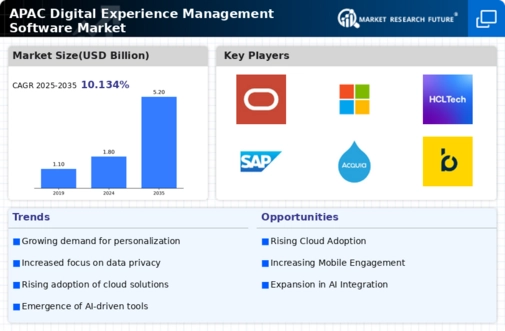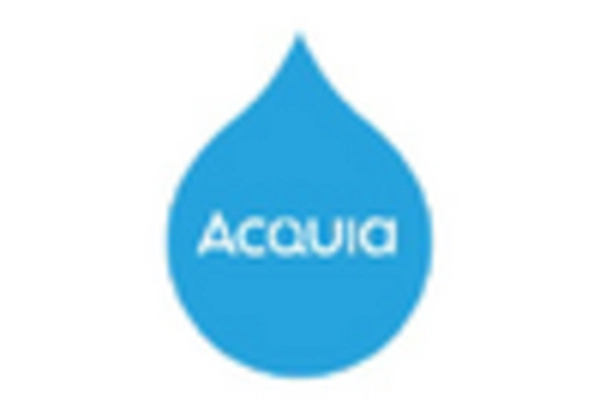China : Unmatched Growth and Innovation
China holds a commanding market share of 43.5% in the digital experience management software sector, valued at $650.0 million. Key growth drivers include rapid digital transformation, increasing internet penetration, and a burgeoning e-commerce sector. Government initiatives like the Digital China strategy are fostering innovation, while robust infrastructure development supports tech adoption across industries. The demand for personalized customer experiences is driving consumption patterns, particularly in retail and finance.
India : Innovation and Market Expansion
India's market share stands at 25.6%, valued at $400.0 million, driven by a young, tech-savvy population and increasing smartphone usage. The government's Digital India initiative promotes digital literacy and infrastructure development, enhancing demand for experience management solutions. Consumption patterns reflect a shift towards mobile-first strategies, particularly in sectors like retail and education, where personalized experiences are becoming essential.
Japan : Focus on Quality and Customization
Japan accounts for 16.3% of the market, valued at $250.0 million. The growth is fueled by high consumer expectations for quality and customization in digital experiences. Regulatory frameworks support data privacy and security, which are critical in this market. The demand for sophisticated solutions is evident in sectors like automotive and finance, where companies are investing heavily in customer engagement technologies.
South Korea : Strong Consumer Engagement Trends
South Korea holds a market share of 12.8%, valued at $200.0 million. The country's advanced technological infrastructure and high internet penetration drive demand for digital experience management software. Government policies promoting smart city initiatives and digital innovation are key growth factors. The competitive landscape features major players like Adobe and Salesforce, particularly in urban centers like Seoul, where consumer engagement is paramount.
Malaysia : Digital Transformation on the Rise
Malaysia's market share is 6.5%, valued at $100.0 million. The growth is driven by increasing digital adoption across various sectors, supported by government initiatives like the Malaysia Digital Economy Corporation. Demand for localized solutions is rising, particularly in retail and tourism. The competitive landscape includes both local and international players, with Kuala Lumpur being a key market for digital experience solutions.
Thailand : Focus on Customer-Centric Strategies
Thailand's market share is 4.8%, valued at $75.0 million. The growth is propelled by a shift towards customer-centric strategies in sectors like hospitality and retail. Government initiatives aimed at enhancing digital infrastructure are fostering a conducive environment for market expansion. Bangkok serves as a key market, with local players increasingly competing with global giants like Oracle and SAP.
Indonesia : Youthful Population Driving Growth
Indonesia holds a market share of 5.1%, valued at $80.0 million. The youthful population and increasing internet access are significant growth drivers. Government policies promoting digital economy initiatives are enhancing the business environment. Key markets include Jakarta and Surabaya, where local startups are emerging alongside established players like Salesforce, focusing on sectors such as e-commerce and fintech.
Rest of APAC : Tailored Solutions for Varied Industries
The Rest of APAC accounts for a market share of 0.3%, valued at $50.38 million. This diverse region presents unique challenges and opportunities, with varying levels of digital maturity. Demand for tailored solutions is evident across sectors like healthcare and education. Local players are increasingly collaborating with global firms to enhance their offerings, adapting to specific market needs and regulatory environments.

















Leave a Comment